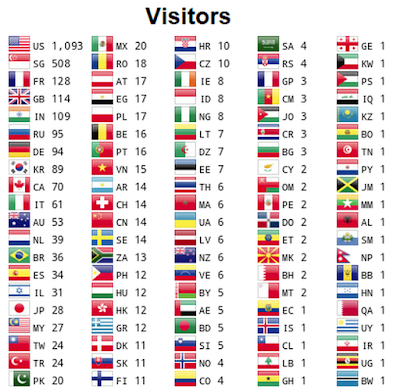If you're like me, most likely you're self-taught in the PCB-RE skillset out of necessity. Maybe you've developed your own methodology and even have the luxury of automated equipment to help cut down the time and effort in doing those menial tasks of connectivity probing. Well, good for you!
For the majority of PCB-RE engineers, however, it is the manual route using the digital multimeter (DMM). Whether you've come out with a streamlined process of doing it, that varies from one person to another and also the kind of resources and drafting tools you use.
What about budding enthusiasts who've never done it before and decided to give it a try? Or perhaps some had already done so but quit halfway due to lack of know-how. Until four years ago, the only way to get a good peek of this coveted art was via online articles and postings by engineers who've 'been there, done that' and were kind enough to share their experiences and advice. But these gems are usually scattered and at best bits and pieces that require much time to search and sift out from the tons of jumbled information.
The good news is, there is currently three books published that allow a beginner to be properly introduced to this niche topic, namely, The Art of PCB Reverse Engineering, PCB-RE: Tools & Techniques, and PCB-RE: Real World Examples. So which book should you read first? This post will hopefully answer that question and point you in the right direction.
The Art of PCB Reverse Engineering covers the basics of doing manual PCB-RE and employs Microsoft Visio as the tool of choice for drafting schematic diagrams. It has six chapters and five appendices that guides the reader through a systematic process of doing preparation work in analyzing the PCB for accessibility, creating a bill of materials, determining the type of conformal coating to be removed, if present, and extracting the right information from datasheets.
A large part of the book goes into the details of helping the reader develop good schematic drawing habits for consistency of style and good readability. A real-world example using a SCSI host adapter card is provided with a step-by-step guide. For those familiar with Microsoft Visio, there is even a chapter on advanced techniques that will further sharpen your skill with this versatile drafting tool.
The appendices contain many useful references and charts that will cut down time and effort in looking up for the needed information while engaging in PCB-RE work.There are also freebies such as Visio templates and drawings, SMD and IC Master references, IC packaging and dimensions, etc to get you up to speed. Additional bonuses are also available for readers who leave a positive review on Amazon.
Click on the photo to order on Amazon.
PCB-RE: Tools & Techniques is a sequel book which showcases the works of several renown industrial experts such as Joe Grand (aka Kingpin), Bill Loving and Jeff Rupert of ScanCAD International, Bob Elder of TEEL Technologies, and Dr Sergei Skorobogatov of Cambridge University, etc.
This book is aimed at readers who want to have a better overall understanding of the equipment and methodologies used in the PCB-RE industry. Both automated and semi-automated processes are discussed, from the amazing flying probe tester (FPT) to the compact Clip-N-Learn benchtop workstation, from brute force deconstruction techniques to the elusive X-ray de-layering, and from board-level boundary scan to the microscopic chip-level and chip-off forensic. You name it, the book has it!
Besides the usual useful appendices, there is a separate section on PCB-RE resources that you can either buy or build on your own, as well as a rich list of freeware and online resources which you can refer to build up your own library of knowledge and know-how.
If you're not ready to take on the PCB-RE challenge just yet, perhaps this is the place to start your journey and get a peek into the fascinating world of hardware reverse engineering.
Click on the photo to order on Amazon.
PCB-R: Real-World Examples is the trilogy to the PCB-RE collection and like the sequel book, it also has several contributing authors who shared their invaluable insights and experiences. What better way to learn PCB-RE than to learn it from real-world engineers?
In this book, I show readers how the manual PCB-RE approach is done with a complex board, detailing the steps to divide-and-conquer a hybrid PCB. You will see first hand the process and methodology that I developed and used in my 15 years of reverse engineering work.
Readers will also be treated to some behind-the-scene information used by one of the most successful PCB-RE service providers, ENA Electronics Inc., in their industry practices and processes. Game for a round of firmware hacking? Then let our hacker specialist, Juan Carlos, take you for a spin inside a Huawei wireless router! And if that does not whet your PCB-RE appetite, how about X-ray on an Arduino UNO, breakdown on a quadcopter drone, and come face to face with the innards of a Rigol digital oscilloscope?
Of course, there's still the ever informative appendices, reviews on essential tools you can add to your PCB-RE arsenal, and additional case studies to pore over.
Click on the photo to order on Amazon.
Latest Update!
The fourth and final book on the PCB-RE subject is now available. It covers primarily on the Manual PCB-RE methodology and demonstrates how to reverse engineer a Gigabyte GeForce 8600GT graphics card. You can click on this
link to go to the post for more details.
All my books are written in an engaging style to afford readers an enjoyable reading experience, complete with plenty of informative footnotes and humorous personal anecdotes. Need I say more?


















































